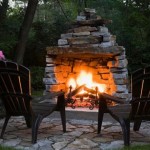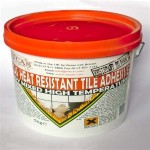Enhancing Stone Fireplaces: The Aesthetics and Functionality of Wood Mantels
Stone fireplaces serve as natural focal points in many homes, exuding a sense of permanence and grounding. The addition of a wood mantel to a stone fireplace elevates the aesthetic appeal and introduces a functional element, providing a space for display and an opportunity to personalize the hearth. The combination of these two materials, when executed thoughtfully, creates a harmonious balance between rustic charm and refined elegance. This article explores the considerations involved in selecting and installing a wood mantel on a stone fireplace, examining the design principles, material choices, and practical implications that contribute to a successful integration.
Design Harmony: Integrating Wood and Stone
The visual impact of a wood mantel on a stone fireplace depends significantly on the design choices made during the selection process. Establishing visual harmony between the two materials involves considering texture, color, and style. These elements should complement each other, rather than competing for attention, to create a cohesive and aesthetically pleasing focal point.
Texture plays a crucial role in the overall design. Stone, by its nature, can range from smooth and polished to rough and rugged. The wood mantel should complement this texture. A rough-hewn stone might pair well with a reclaimed wood mantel, echoing the rustic aesthetic. Conversely, a smooth, contemporary stone might benefit from a sleek, polished hardwood mantel to maintain a sense of sophistication. The interplay of textures adds depth and visual interest to the fireplace.
Color is another essential consideration. The color palette of the stone and wood should harmonize, either through complementary contrasts or subtle tonal variations. For instance, a light-colored stone fireplace could be paired with a darker wood mantel to create a striking contrast, drawing the eye and emphasizing the mantel as a focal point. Alternatively, a stone fireplace with earthy tones might be complemented by a wood mantel with similar warm hues, creating a more subtle and natural look. It is important to consider the existing decor of the room when choosing colors, ensuring that the fireplace integrates seamlessly with the overall design scheme.
The architectural style of the fireplace and the room it occupies should also influence the design of the mantel. A traditional stone fireplace in a classic home might benefit from a mantel with intricate carvings and detailed molding. A modern stone fireplace, on the other hand, might be better suited to a minimalist mantel with clean lines and a simple profile. Matching the style of the mantel to the overall architectural context ensures that the fireplace remains a cohesive and integrated part of the home's design.
Material Selection: Choosing the Right Wood for Your Stone Fireplace
The choice of wood for a mantel is critical, influencing both the aesthetic appeal and the longevity of the installation. Different wood species offer distinct characteristics in terms of grain, color, durability, and susceptibility to heat. Understanding these properties is essential for making an informed decision that aligns with both the design objectives and the practical considerations of a fireplace mantel.
Hardwoods, such as oak, maple, and cherry, are popular choices for mantels due to their durability and aesthetic appeal. Oak is a robust and versatile option, known for its distinctive grain patterns and resistance to wear. Maple offers a smoother, more uniform texture and a lighter color, making it suitable for contemporary designs. Cherry provides a rich, reddish-brown hue that adds warmth and elegance to a room. These hardwoods are typically more resistant to dents and scratches than softwoods, making them a good choice for mantels that will be exposed to frequent use or handling.
Softwoods, such as pine and cedar, are also viable options for wood mantels, particularly in rustic or country-style settings. Pine is a relatively inexpensive softwood that can be easily stained or painted to achieve a desired look. Cedar is known for its natural resistance to insects and decay, making it a durable choice for certain environments. However, softwoods are generally more susceptible to scratches and dents than hardwoods, so they may require more careful handling and maintenance.
Reclaimed wood is an increasingly popular option for wood mantels, offering a unique aesthetic and an environmentally responsible choice. Reclaimed wood, often sourced from old barns, factories, or other structures, has a distinctive character and patina that cannot be replicated with new lumber. It adds a sense of history and authenticity to a fireplace, and its imperfections, such as nail holes and saw marks, contribute to its rustic charm. When using reclaimed wood, it is important to ensure that it has been properly treated to remove any pests or contaminants and that it is structurally sound.
Regardless of the wood species chosen, it is essential to ensure that the mantel is properly seasoned and dried to prevent warping or cracking. Kiln-dried wood is typically the best option, as it has been dried to a specific moisture content, minimizing the risk of future movement or deformation. The wood should also be treated with a protective finish to prevent moisture damage and to enhance its durability. Common finishes include stains, varnishes, and sealants, each offering different levels of protection and aesthetic effects.
Installation Considerations: Safety and Structural Integrity
The installation of a wood mantel on a stone fireplace requires careful planning and execution to ensure both safety and structural integrity. The mantel must be securely attached to the stone, and it must be positioned at a safe distance from the fireplace opening to prevent the risk of fire. Adhering to building codes and safety guidelines is essential for ensuring a safe and compliant installation.
The height of the mantel above the fireplace opening is a critical safety consideration. Building codes typically specify minimum clearance distances between the top of the firebox and combustible materials, such as wood. These distances vary depending on the size and type of fireplace, as well as the specific regulations in the local jurisdiction. It is essential to consult with a qualified contractor or building inspector to determine the appropriate mantel height for a particular fireplace installation. Generally, a minimum of 12 inches of clearance is recommended, but this may need to be increased for larger fireplaces or those with higher heat output.
The method of attaching the mantel to the stone fireplace is also crucial for ensuring safety and stability. Stone is a difficult material to work with, and it requires specialized techniques and hardware to create a secure connection. Common methods of attachment include using masonry screws, expansion anchors, or epoxy adhesives. Masonry screws are typically used to attach the mantel to the stone through pre-drilled holes. Expansion anchors provide a secure hold by expanding within the stone as they are tightened. Epoxy adhesives can be used to bond the mantel directly to the stone, but they require careful preparation and application to ensure a strong and durable bond.
The weight of the mantel is another important factor to consider. A heavy mantel may require additional support, such as brackets or corbels, to prevent it from sagging or pulling away from the stone. These supports should be chosen to complement the design of the mantel and the fireplace, and they should be securely attached to both the mantel and the stone. It is also important to ensure that the stone structure itself is capable of supporting the weight of the mantel and any decorative items that may be placed on it.
Proper insulation is essential to protect the wood mantel from the heat of the fireplace. A non-combustible barrier, such as metal flashing or fire-resistant drywall, should be installed between the mantel and the stone to prevent heat transfer. This barrier will help to keep the mantel cool and prevent it from catching fire. All connections to the firebox should be properly sealed to prevent smoke and fumes from escaping.
Installing a wood mantel on a stone fireplace is a complex process that requires careful planning, attention to detail, and adherence to safety guidelines. It is recommended to hire a qualified contractor or experienced carpenter to perform the installation, especially if you are not familiar with masonry work or building codes. A professional installer will have the necessary tools, knowledge, and expertise to ensure that the mantel is securely and safely installed, and that it will provide years of enjoyment and beauty.
Furthermore, after the installation is complete, it is essential to regularly inspect the mantel for any signs of damage or deterioration. Check for cracks, warping, or loose connections, and address any issues promptly to prevent further damage or safety hazards. Applying a protective finish to the wood can help to prevent moisture damage and prolong the life of the mantel. With proper care and maintenance, a wood mantel on a stone fireplace can remain a beautiful and functional focal point in your home for many years to come.

Fireplace Mantel Installation Before And After

Installing A Heavy Wood Mantel 2024 Beginners Guide

How To Build And Hang A Mantel On Stone Fireplace Shanty 2 Chic

Country Style Mantels And Fireplaces Town Living

Stone Fireplace Makeover Taryn Whiteaker Designs

Magrahearth Natural Wood Concrete Mantel Fireplace Stone Patio

Simple European Farmhouse Barn Beam Fireplace Mantel Makeover Open Doors Hearts

Barnwood Fireplace Mantel The Collection

White Stone Fireplace With Gray Wash Wooden Mantel Cottage Living Room

How To Build And Hang A Mantel On Stone Fireplace Shanty 2 Chic
Related Posts








